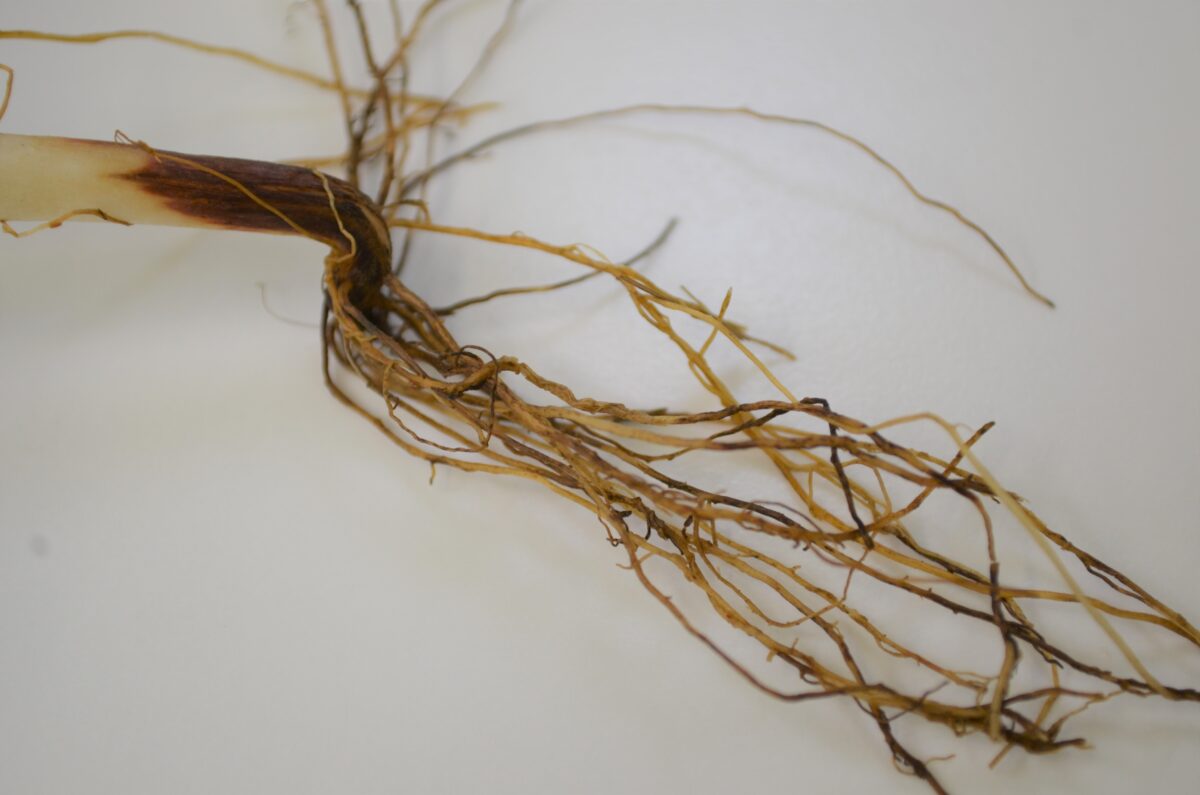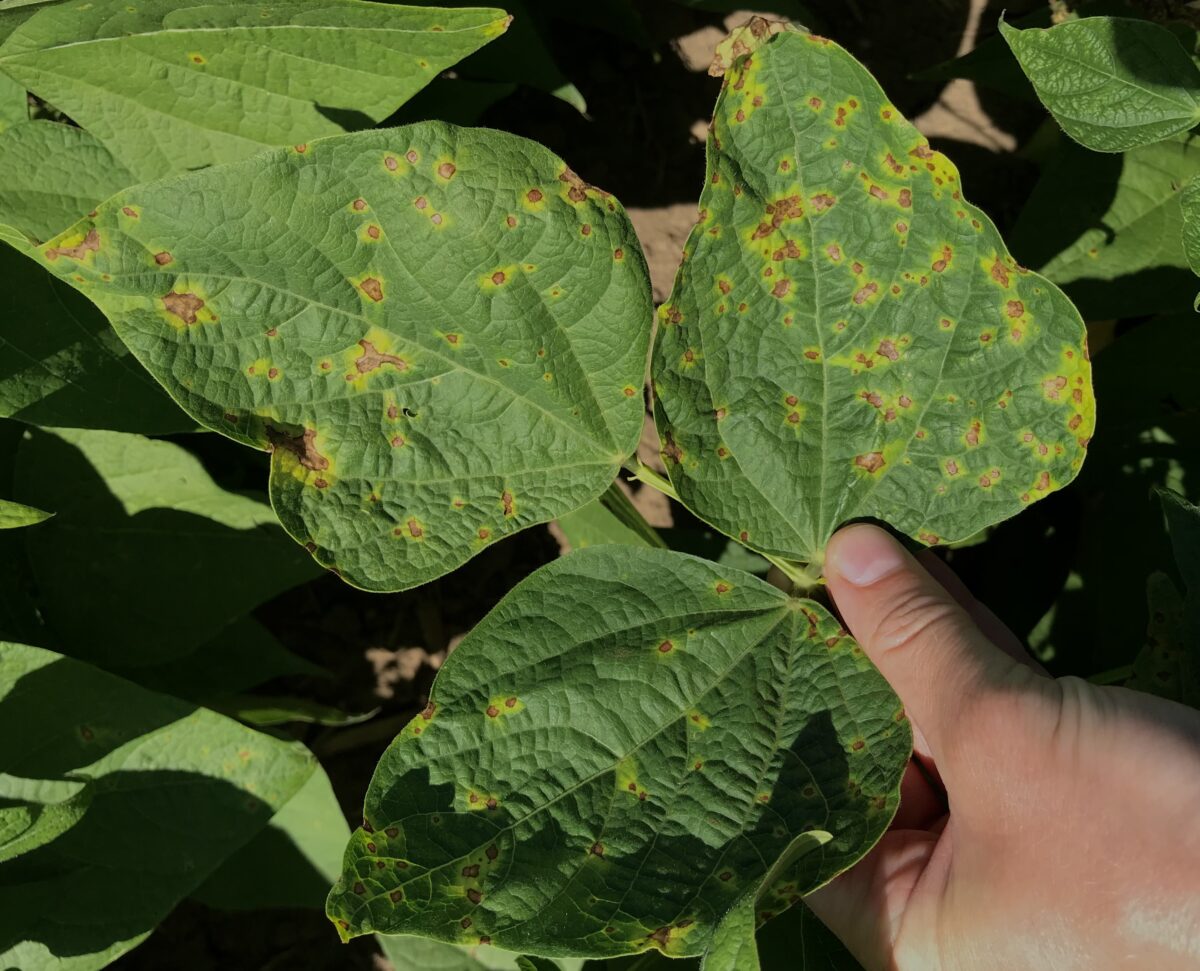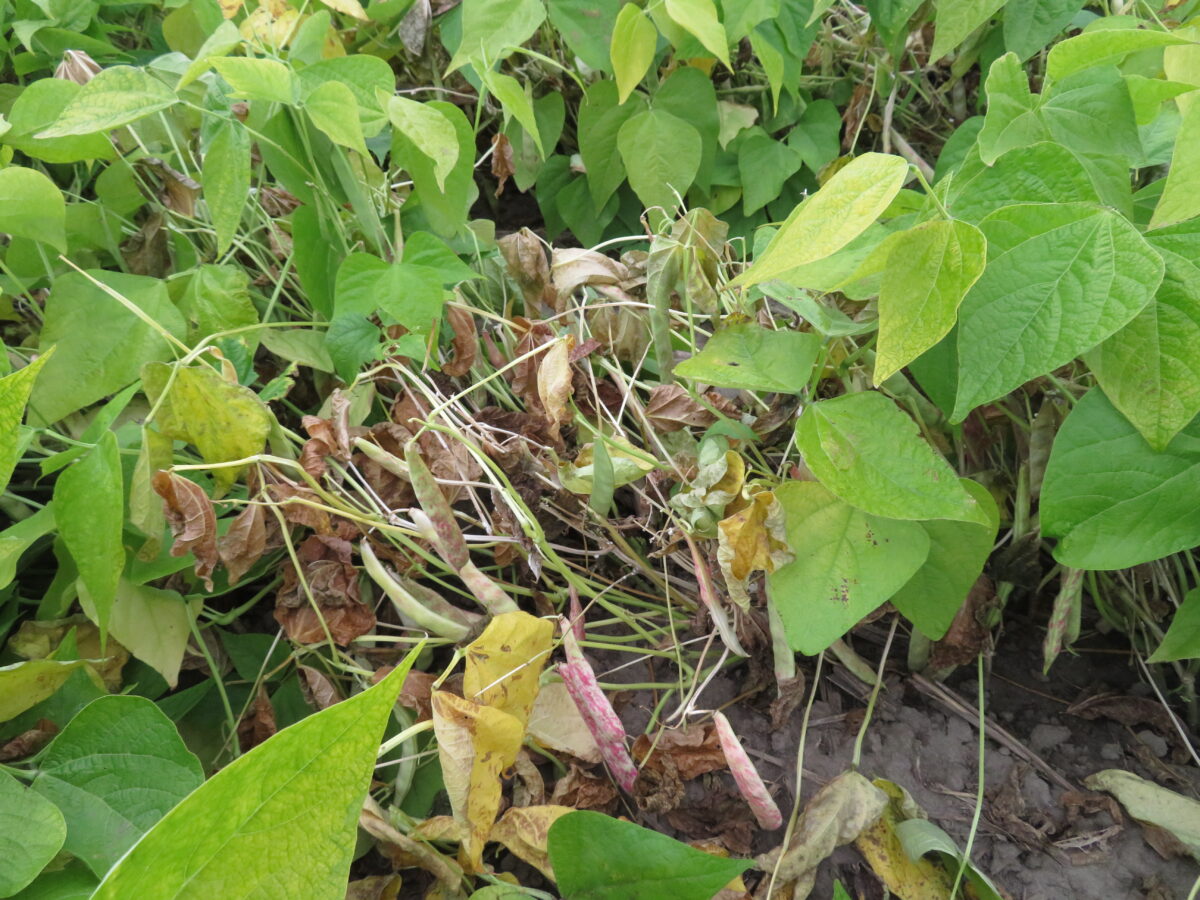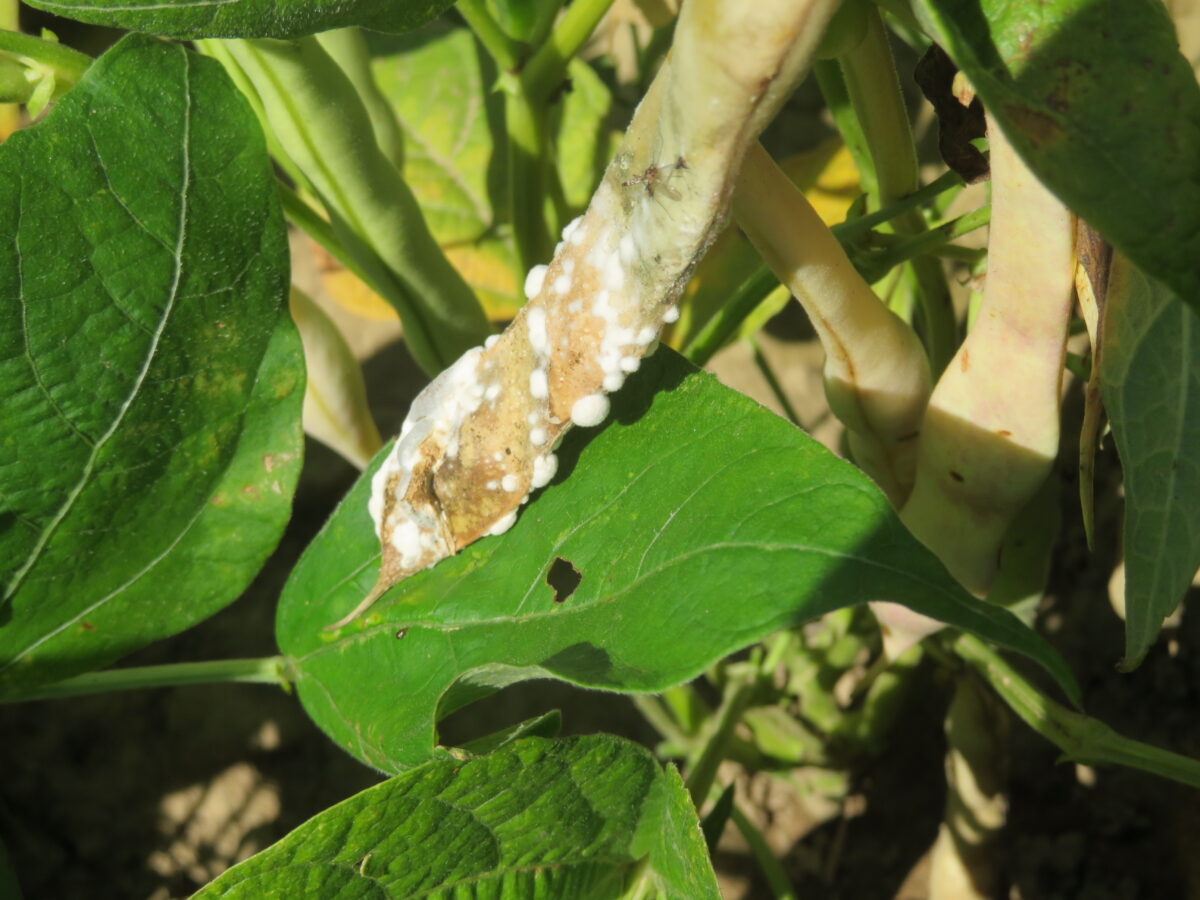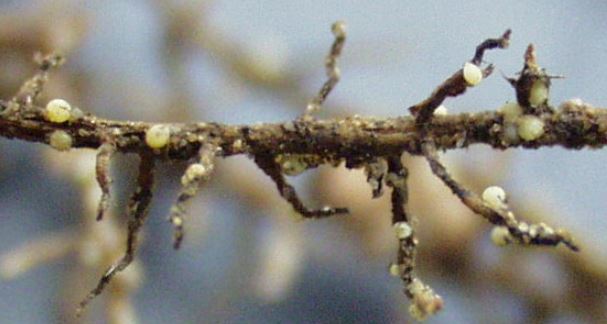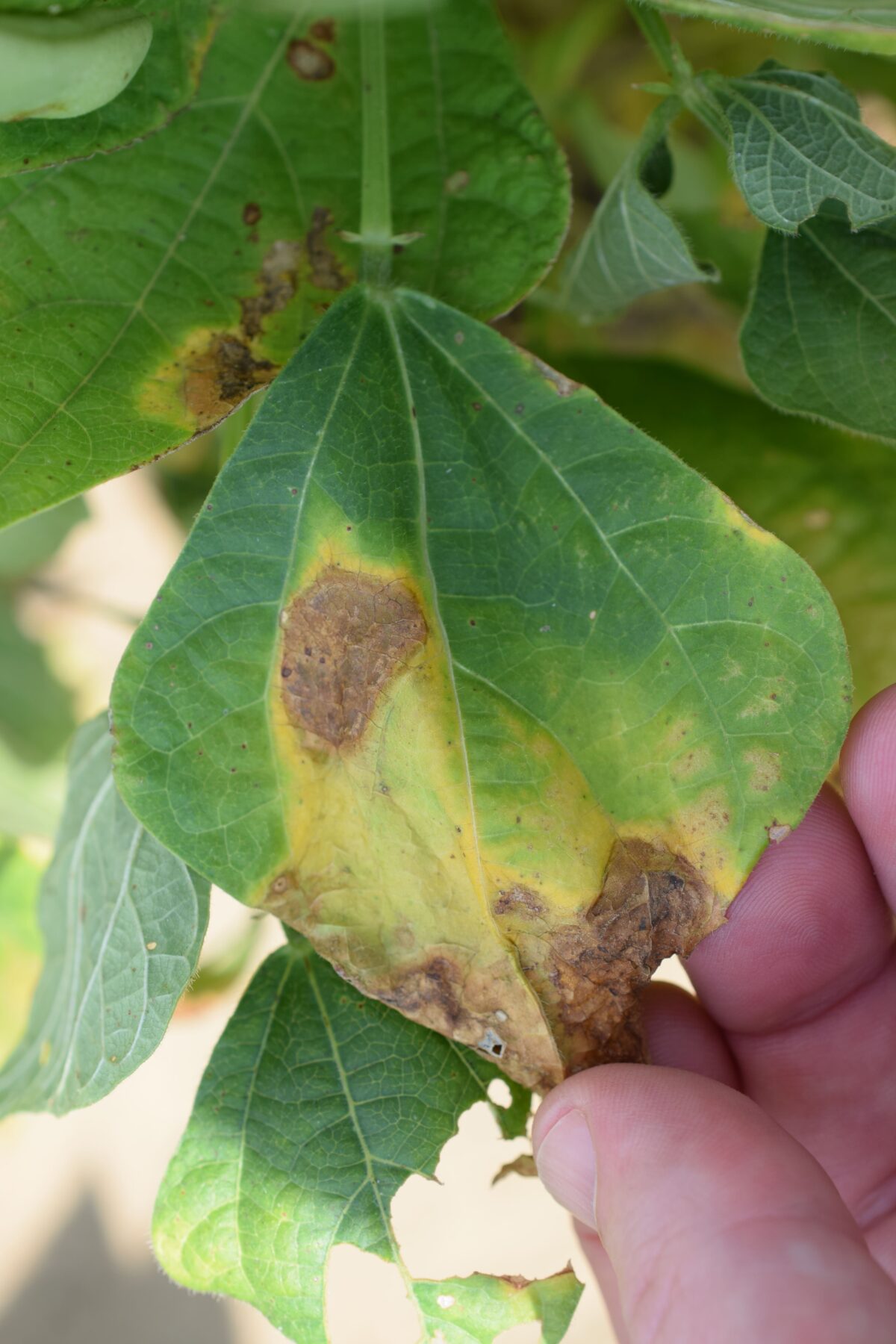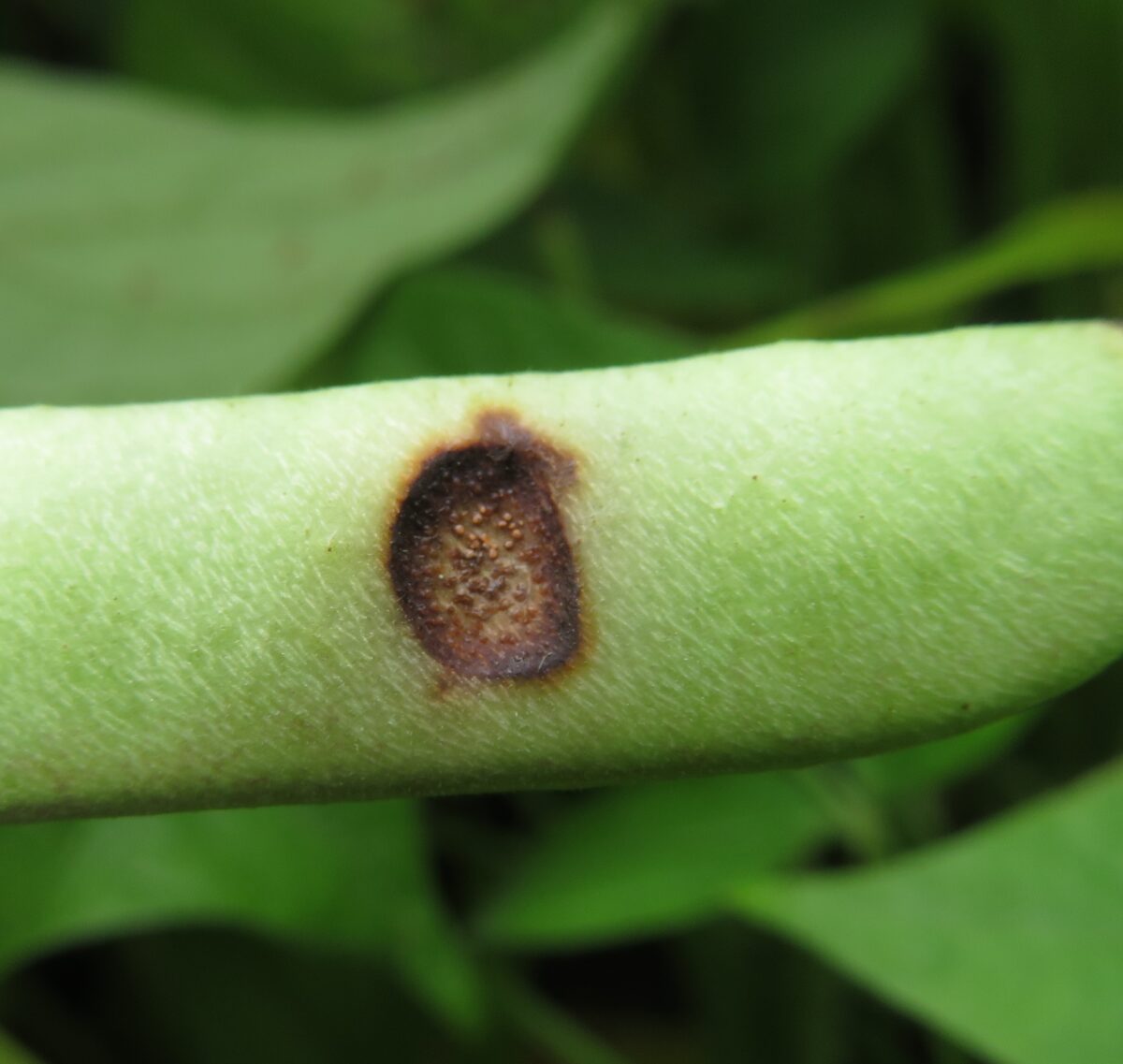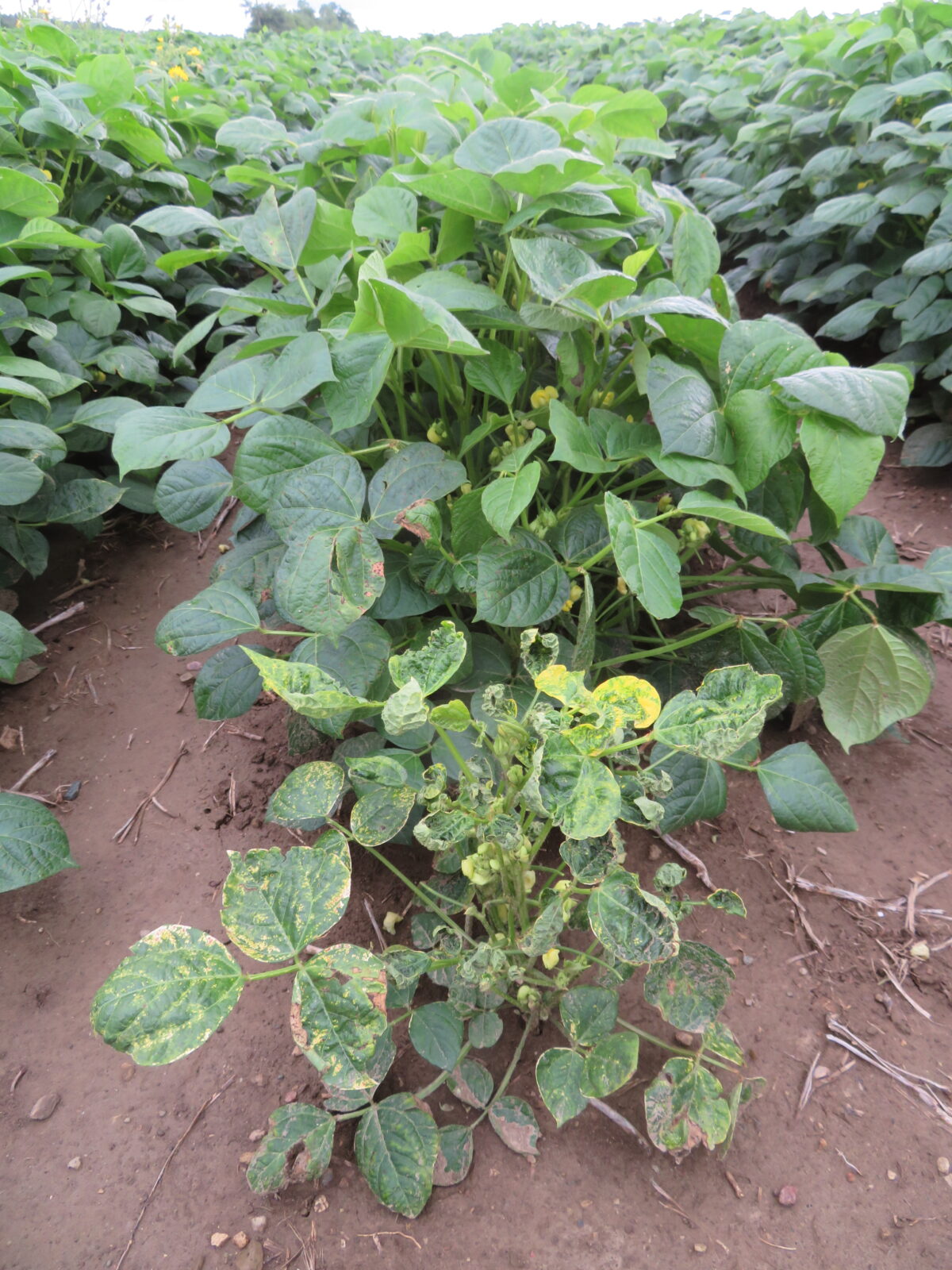Growers often apply fungicides to manage foliar diseases such as anthracnose, and tankmix a foliar fertilizer when they apply a fungicide to reduce application costs. It is unknown if the tankmix reduces anthracnose control from the fungicide. The purpose of this study was to measure fungicide performance under moderate to severe anthracnose pressure, with and…Continue readingAnthracnose Control from Tankmixing a Fertilizer with a Fungicide
Category: Disease
Sprayer technology is available to apply pesticides at any time – day or night. Some growers rely on this technology to manage a larger crop area. Previous studies have found herbicides such as glyphosate are more effective when applied at certain times of the day. This study looks for a similar response from four day/night…Continue readingTime of Day for Fungicide Application Does Not Impact Disease Control
Root Rot Complex
Root rot complex (Fusarium solani, Rhizoctonia solani, Pythium spp. , Chalara basicola) Incidence Numerous organisms cause root rot symptoms on dry edible beans. In Ontario, the four main fungal pathogens are Fusarium, Pythium, Rhizoctonia and Chalara (formerly Tielaviopsis). These organisms can occur individually or in combination, as is often the case. This is referred to…Continue readingRoot Rot Complex
Common bacterial blight (Xanthomonas campestris pv. phaseoli) Halo blight (Pseudomonas syringae pv. phaseolicola) Bacterial brown spot (Pseudomonas syringae pv. syringae) Incidence Several different bacteria cause significant damage in dry edible beans. In Ontario, common bacterial blight (CBB) and halo blight have been the primary bacterial diseases but surveys in 2018 – 2019 have shown that…Continue readingBacterial Blights: Common Bacterial Blight (CBB), Halo Blight, and Bacterial Brown Spot (BBS)
White mold is an important disease of dry beans in Ontario and in-crop management of white mold occurs during flowering. White mold spores can land on stems, leaves or pods but deteriorating flower petals are very susceptible to infection. Spores colonize flower tissue, and the disease enters other healthy plant tissues when infected flower petals…Continue readingWhite Mould: In-Crop Disease Development and Management
White Mould
White Mould (Sclerotinia sclerotiorum) Incidence White mould is a difficult disease to predict, although most years the appearance of the disease is higher in dry edible beans than in soybeans. The disease is most damaging when cool (moderate), wet conditions occur during flowering or near harvest. Appearance Initial infection takes place on plant tissue such…Continue readingWhite Mould
Soybean Cyst Nematode (SCN)
Soybean Cyst Nematode (Heterodera glycines) Although soybeans are the major host, soybean cyst nematode (SCN) has a wide range of hosts that includes dry edible beans. SCN has been increasing in edible bean-producing areas of the province. Planting dry edible beans into SCN-infested fields can result in an increase in root rot complex infection, since…Continue readingSoybean Cyst Nematode (SCN)
There has been a huge amount of focus on dry bean breeding dealing with resistance towards common bacterial blight (CBB) caused by the seed borne bacteria Xanthomonas axonopodis pv. phaseoli (Xap) and X. fuscans pv. fuscans (Xff). This bacterium is controlled through the use of certified seed, however the bacteria can overwinter on crop debris…Continue readingBacterial Brown Spot Observations in Ontario Dry Beans (2019)
Anthracnose
Anthracnose (Colletotrichum lindemuthianum) Incidence Anthracnose is a significant and important dry edible bean disease in Ontario and has been managed with resistant varieties, clean seed and seed treatments. In fields where the disease does develop, as a result of new strains of fungus or from the use of infected seed, significant damage can occur. Appearance…Continue readingAnthracnose
Alfalfa Mosaic Virus
Description Alfalfa mosaic virus (AMV), also known as Lucerne mosaic virus or Potato calico virus, can infect over 600 plant species in 70 different plant families, inlcuding dry beans, soybeans, peas, alfalfa, potato, peppers, sow thistle, vetch, nightshades, annual medic species, and clover species, to name a few. Transmission can occur on seed, but in Ontario dry…Continue readingAlfalfa Mosaic Virus
